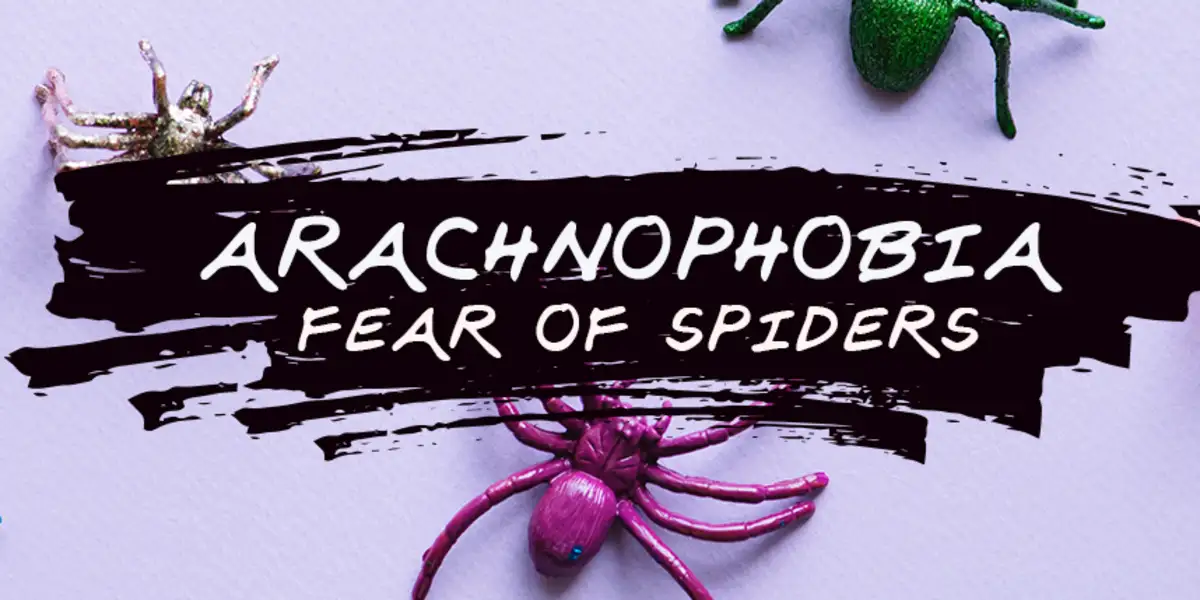Ever caught yourself shivering at the sight of a spider innocently weaving its web in a corner of your room? You’re not alone. Welcome to the world of Arachnophobia! This blog post is dedicated to exploring why many individuals exhibit an intense fear of these eight-legged creatures. Stay tuned as it unravels this intriguing subject.
Appearance
A significant factor that contributes to arachnophobia is the appearance of spiders. At first glance, their eight elongated legs, swiftly moving bodies, and a pair of unblinking eyes can project an image that many find unsettling. Spiders’ unpredictable movements can be another source of fear, as they seem to appear out of nowhere, increasing the shock factor. The size and color of these creatures can also play a role in amplifying this fear.

Larger spiders, or those with bright, distinctive color patterns, can seem more menacing. Furthermore, the way spiders are portrayed in media — often as symbols of danger, fear, or evil — has greatly influenced people’s perception of them. However, there are so many non-creepy and interesting facts about spiders that can help people learn to appreciate these critters instead of fearing them. Although spiders are, in reality, beneficial to the ecosystem and pose little threat to humans, their unusual appearance continues to trigger fear and anxiety in many.
Evolutionary Instinct
An interesting theory suggests that the fear of spiders, or arachnophobia, may stem from evolutionary instincts. Historically, humans had to be wary of venomous spiders, as a bite could lead to severe illness or death. Therefore, those who instinctively avoided spiders had a survival advantage, and these instincts have been passed down through generations.
Even today, when most species pose no threat, this evolutionary response may still be at play, causing an automatic fear reaction at the sight of a spider. It’s a fascinating testament to how the ancestors’ survival challenges still shape people’s behaviors and fears in the modern world.
Cultural Influence
In different cultures all across the world, spiders are portrayed negatively, making them even more repulsive. Here are some examples:
- Weavers of Fate
- Divine protectors
- Symbol of patience
- Symbol of mystery
- Symbol of ambiguity
- Malevolence and trickery
- Evil spirits
- Symbol of bad luck
- Symbol of unwanted intrusion
- Association with witchcraft
- Fear, horror, and disgust
- Disease and filth
- Creators of chaos
Around the globe, spiders are often depicted negatively in folklore, myths, and media, which can shape public perception and responses. From being seen as symbols of malevolence, trickery, disease, or bad luck, to their association with witchcraft, these cultural portrayals reinforce fear and revulsion.
Additionally, movies and books frequently use spiders to represent horror, amplifying the fear factor. Consequently, these cultural narratives, deeply ingrained in people’s collective consciousness, can trigger a fear response, making spiders appear more threatening than they truly are.
Lack of Control
This feeling can manifest due to unpredictability in a spider’s movement, or the fact that it can appear suddenly and out of nowhere. As humans, you instinctually desire control over your environment, and when an aspect like a spider’s presence disrupts that perceived control, it can lead to apprehension and fear.
This can be particularly intense if you come across a spider in spaces you consider safe and controlled, like your home. Hence, this fear is not just about the spiders themselves, but more about the anxiety of not being in control.
Media Sensationalism
Movies, TV shows, news reports, and even social media frequently portray spiders as dangerous, horrifying creatures, which rarely reflects reality. This constant negative portrayal can shape public perceptions, leading to widespread anxiety about spiders. For instance, horror movies often use large, menacing spiders to induce fear, while news outlets might overemphasize the danger posed by rare, venomous species.
This media-induced fear can be so potent that it instills a deep-seated dread of spiders, overshadowing the fact that most species are harmless and play a crucial role in the ecosystem. Indeed, media sensationalism plays a significant role in amplifying the fear of spiders.

Previous Negative Experience
Negative encounters with spiders can also significantly contribute to the development of arachnophobia. An individual who has suffered a spider bite or had a particularly frightful experience with a spider in the past is likely to develop a fear response. This fear can be so intense that even the sight or thought of a spider can trigger anxiety and discomfort.
For some, just a picture of a spider or a realistic depiction in a movie can be sufficient to induce fear. This response is rooted in the brain’s mechanism to avoid repeating harmful experiences. This survival instinct, although helpful in some situations, can result in irrational fears when it comes to harmless or less harmful creatures like most species of spiders.
In conclusion, it’s clear that your fear of spiders, or arachnophobia, is influenced by various factors, from evolutionary instincts to cultural narratives. Understanding these can help you manage this fear. Remember, most spiders are harmless and play a vital role in the ecosystem. So, the next time you encounter a spider, try to appreciate its place in nature rather than letting fear take over.
